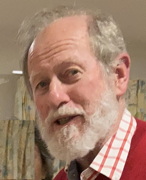This Research Programme was established in 1988 to address systems which transcend
the boundaries of individual organisations. The term 'supra-organisational'
is used to encompass the many different forms such systems take.
The Programme's early focus was on the technologies of Electronic Funds Transfer
Systems (EFTS), Electronic Data Interchange (EDI) and computer matching. More
recently, its scope has widened to include many other forms of information technology,
particularly electronic commerce (the full range of electronic services which
support of the buying and selling of goods and services); on-line and screen
trading (in which deals can be closed with little or no recourse to meetings
or telephone conversations); smart cards; and applications of the Internet.
The orientation of the Programme is towards business and policy aspects, including
understanding of the adoption process; stimulation of the adoption of new technology;
overcoming of the inhibitors against adoption; understanding of the impacts
of supra-organisational systems from the viewpoints of individuals, organisations,
industry sectors, the economy and society as a whole; management of those impacts;
and relevant industry, economic and social policies.
Participants in the Programme bring to it some depth of understanding of technical
issues, contribute toward the solution of technical problems, and participate
in the specification of system requirements in technical terms. In relation
to such matters as software and telecommunications engineering, appropriate
expertise is drawn upon, from within the A.N.U. and elsewhere.
Seed funding for the Programme was provided by the A.N.U.'s Bruce Fund. Support
has subsequently been attracted from a variety of sources. In relation to some
projects, an entrepreneurial role is adopted, with the research investment being
recovered from sales of the resulting publications. The depth of understanding
of supra-organisational systems is enhanced by consultancy work. Care is taken
to identify, and avoid or manage, any potential conflicts of interest.
The projects undertaken within the Programme provide valuable information to
user-organisations in the private sector, and in Federal and State Governments;
to product and service providers and consultants; to industry associations,
such as the EDI Council of Australia (EDICA); and to organisations fulfilling
policy and regulatory roles, particularly in federal government, including the
Information Exchange Steering Committee (IESC).
'Supra-Organisational Systems'
The term 'supra-organisational systems' (S-OS) is not
in common usage, but was coined to describe this Programme's scope. This section
explains the notion.
Computers have been applied to the processing of data since the 1950s. From
the late 1960s, telecommunications technology was increasingly used to link
geographically dispersed users with computers. This era might be described as
that of 'intra-organisational systems'. Some of these systems
have become large, complex and highly integrated, such as distributed computer-aided
design and manufacturing (CAD/CAM) and computer-integrated manufacturing (CIM).
During the 1980s, the combination of computers, communications and in some
cases robotics (now referred to as Information Technology - IT), was applied
not only within organisations but also across organisational boundaries. The
needs of pairs of organisations operating in partnership are served by 'inter-organisational
systems'. Such systems may involve a terminal installed in one organisation
and connected to a processor in another, or direct links between the processors
of two organisations; for example, motor vehicle registration authorities generally
provide for direct access to their data by police forces.
In many cases, the economics of IT militate against the proliferation of inter-organisational
systems. Instead, arrangements have arisen in which many organisations communicate
through some form of common facility. The term 'multi-organisational
systems' is used for arrangements such as Electronic Funds Transfer
Systems (EFTS), whereby financial institutions conduct transactions electronically
instead of via cash or paper-based documents.
Another, particularly important class of multi-organisational system is Electronic
Data Interchange (EDI). This is most readily conceived as the provision of purchase
orders in electronic rather than paper form; however, any structured communication
is a candidate. Other emergent multi-organisational systems are computer-aided
logistics support (CALS) for use by industrial organisations to exchange design
information; and on-line or screen-based trading, in such diverse products as
livestock, foreign currency, grain, shares and fish.
The Programme distinguishes a further class, for which the term 'extra-organisational
systems' has been coined. This class of systems involves not only large
organisations with professional IT services staff, but also small business enterprises,
unincorporated businesses and associations, and private individuals; for example,
Consumer EFTS includes Automated Teller Machine (ATMs), EFTS at Point of Sale
(EFT/POS) services in merchants' premises, and point-of-banking (POB) and home-banking
services. Magnetic-stripe cards are giving way to so-called 'smart cards' containing
an on-board computer and storage.
A further category, 'public systems', comprises such applications
as Bulletin Board Systems (BBS) and databases and catalogues publicly accessible
via the Internet. Such systems are intended primarily for use by private individuals,
but intersect with corporate networks.
A great deal of the work undertaken during the Research Programme's first
seven years has been in the area of electronic commerce, and
a substantial number of sub-projects are outlined in this section.
Another area of particular importance has been information infrastructure,
and associated with that, networked multi-media.
In addition, research has been conducted into various aspects of data
surveillance and information privacy.
Created: 15 February 1995 -
Last Amended: 31 January 2009
by Roger Clarke
- Site Last Verified: 15 February 2009
This document is at www.rogerclarke.com/SOS/RogersResPgmSOS.html
Mail to Webmaster -
© Xamax Consultancy Pty Ltd, 1995-2022 -
Privacy Policy

